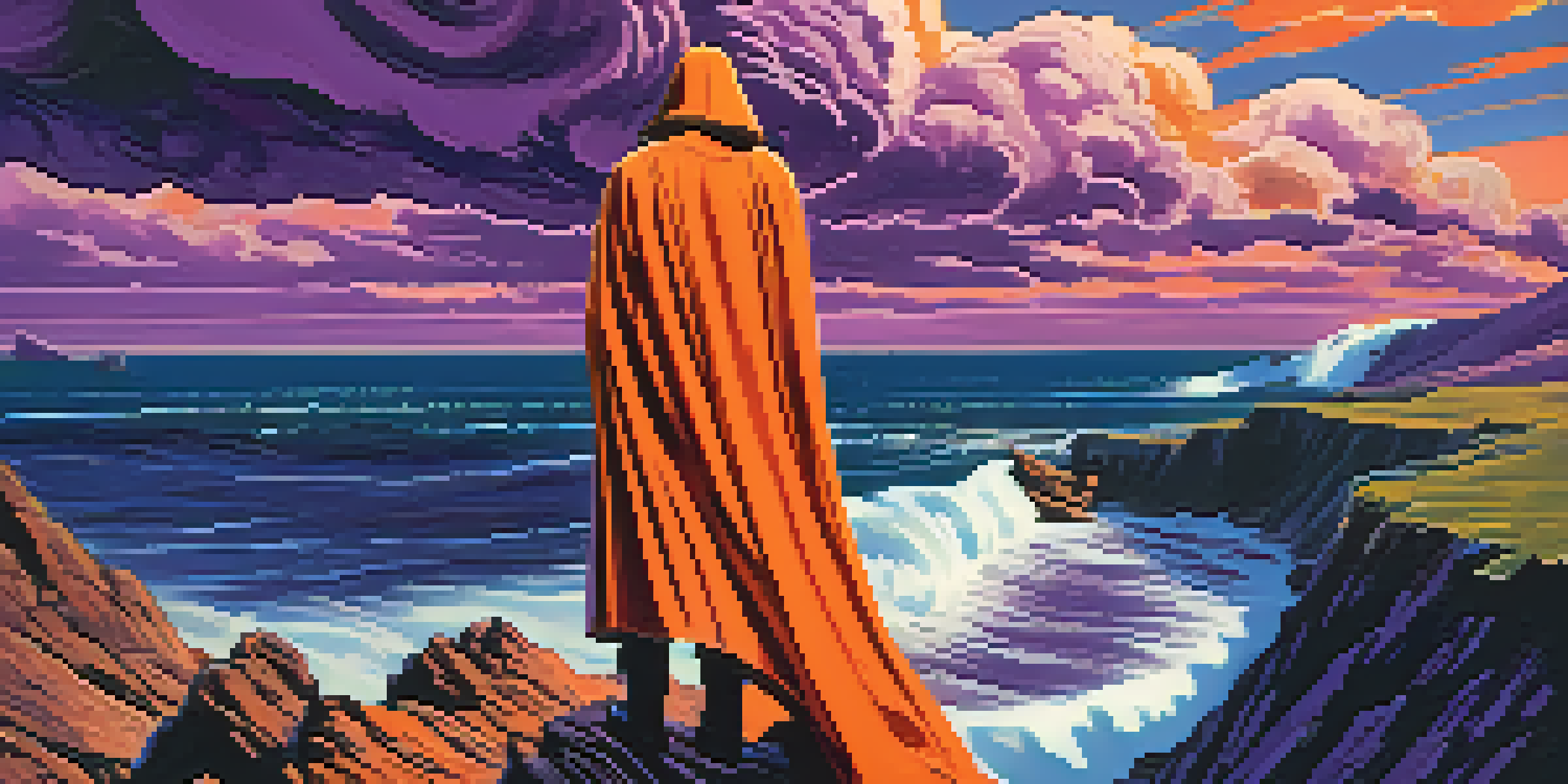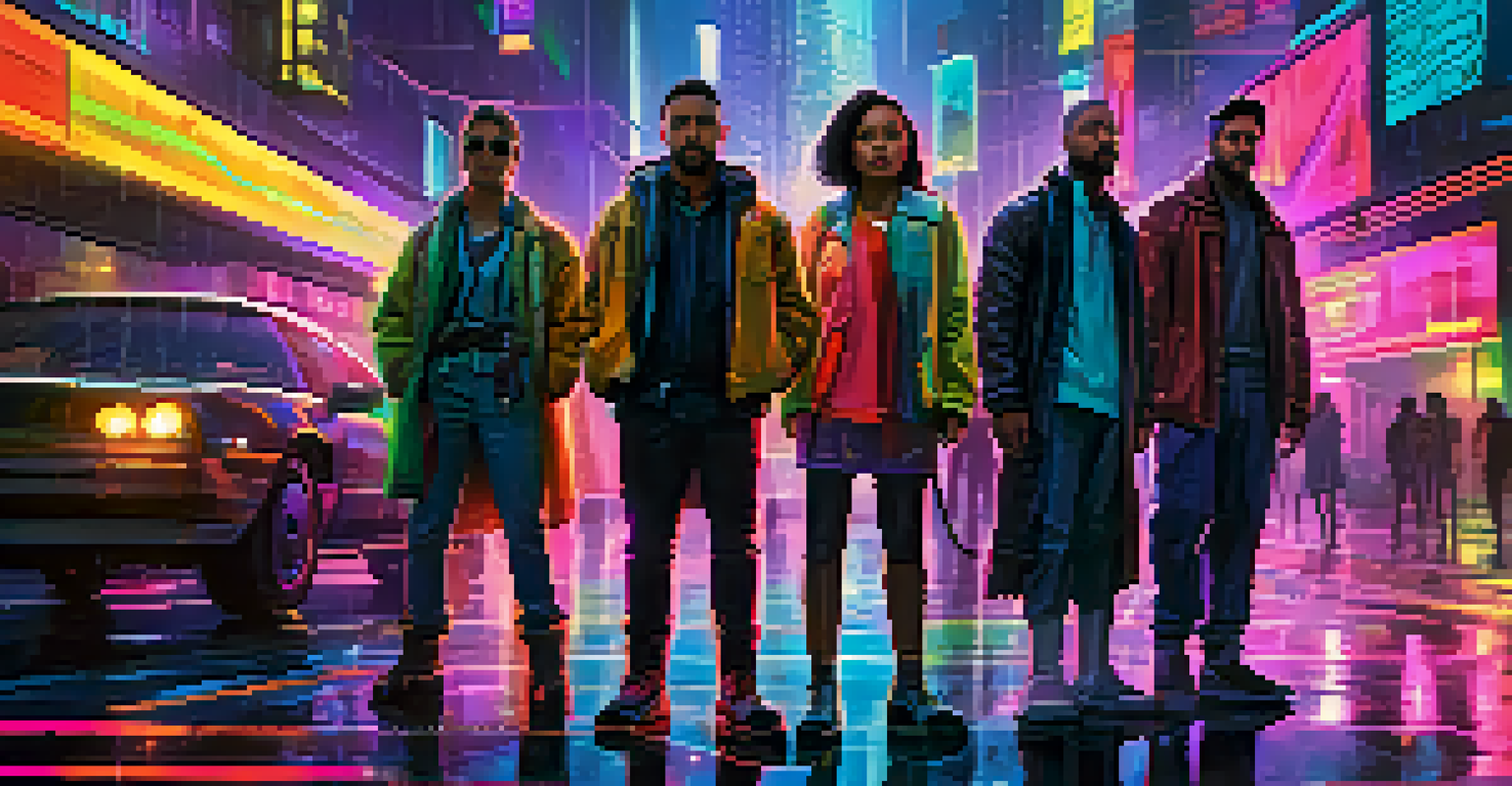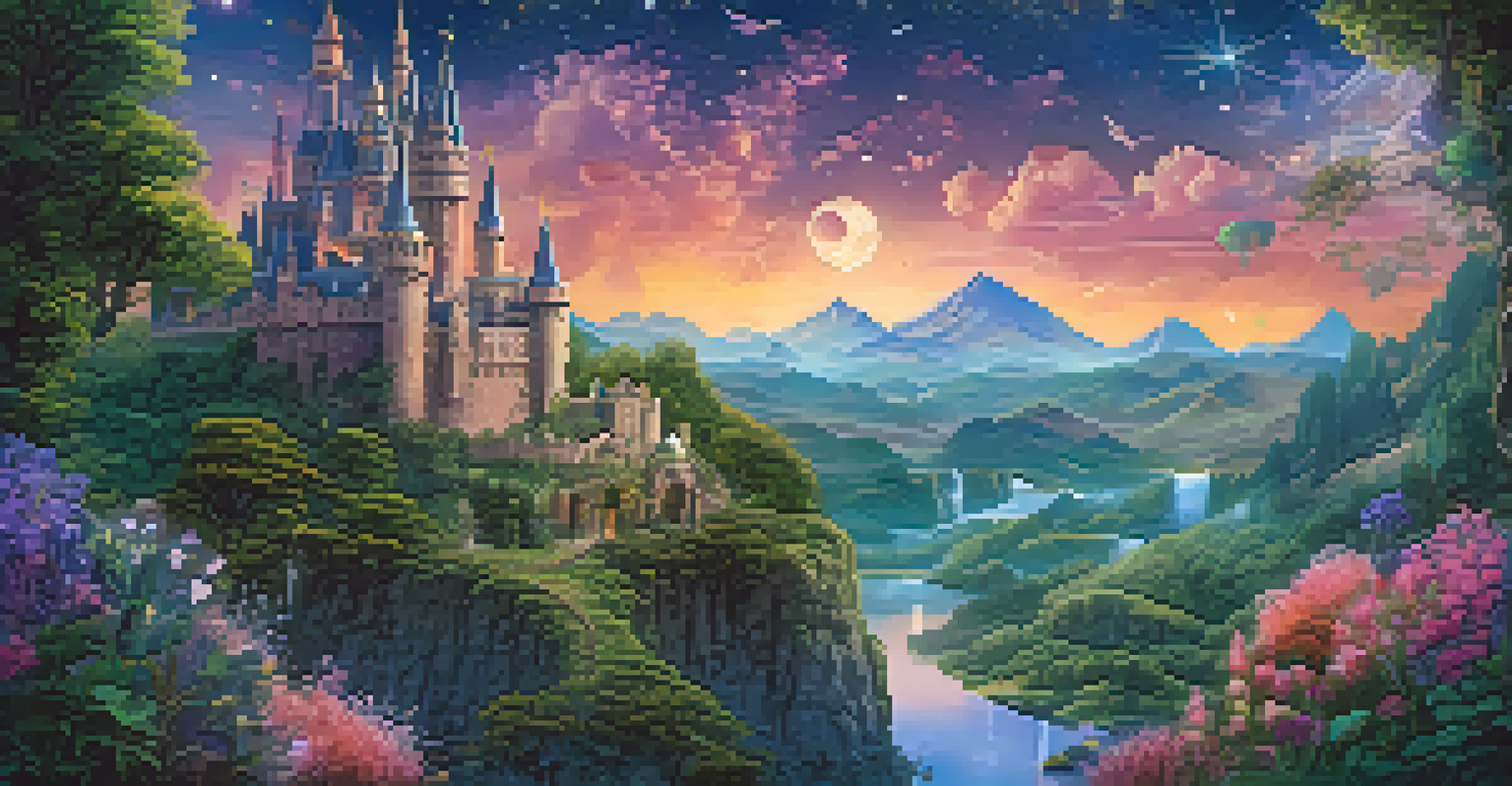Digital vs. Traditional Film Poster Design Methods

Understanding Traditional Film Poster Design
Traditional film poster design relies heavily on hand-drawn illustrations and physical materials. Artists often use mediums like paint, charcoal, or pastels, lending a unique, tactile quality to each piece. This method allows for a high degree of creativity, as each stroke is a direct reflection of the artist's vision and style.
Art is the most beautiful of all lies.
Moreover, traditional methods often evoke a sense of nostalgia, reminding audiences of classic cinema. Think about iconic posters from the 70s or 80s, which often featured bold colors and striking imagery. These posters not only advertise a film but also serve as collectible art pieces that fans cherish.
However, traditional design can be time-consuming and less flexible than its digital counterpart. Once a poster is painted, making changes can be challenging. This sometimes limits experimentation, as artists must commit to their initial ideas, making traditional methods both a beautiful and a daunting choice.
Exploring Digital Film Poster Design
Digital film poster design has revolutionized the way we create and distribute promotional materials. Using software like Adobe Photoshop or Illustrator, designers can manipulate images, experiment with layouts, and add effects with ease. This flexibility allows for rapid iterations, enabling designers to refine their concepts quickly.

Additionally, digital designs can easily be adapted for various formats, whether it's a social media post or a giant billboard. This adaptability is crucial in today's fast-paced digital landscape where audiences engage with content across multiple platforms. Designers can swiftly create versions that are optimized for each medium.
Traditional vs. Digital Design
Traditional film posters offer a nostalgic, tactile quality, while digital designs provide flexibility and rapid iteration for modern audiences.
However, this ease of use can sometimes lead to a lack of authenticity. With so many tools at their disposal, designers may inadvertently create posters that blend together, losing the unique touch that traditional methods offer. As a result, finding a balance between innovation and individuality becomes essential in digital design.
The Role of Technology in Poster Design
Technology plays a pivotal role in shaping modern film poster design, especially in the digital realm. Advanced graphic design software offers a plethora of tools that enhance creativity, from layering to complex color adjustments. This means that designers can bring their visions to life more vividly than ever before.
Every artist dips his brush in his own soul, and paints his own nature into his pictures.
In contrast, traditional methods rely on the artist's skill and intuition, which can also lead to stunning results. For example, the texture of paint on canvas can evoke emotions in ways that digital images sometimes struggle to replicate. The physicality of traditional art can create a deeper connection between the artwork and its audience.
Ultimately, both methods benefit from technology, albeit in different ways. While digital tools streamline the design process, traditional techniques remind us of the artistry involved. This interplay between technology and creativity enriches the field of film poster design, offering a variety of approaches to suit different tastes.
Cost Considerations in Poster Design
When considering the costs associated with film poster design, traditional methods often require more investment upfront. Artists need materials such as canvases, paints, and brushes, which can add up quickly. Additionally, hiring skilled traditional artists can be more expensive due to the time and effort involved in creating each piece.
On the flip side, digital design typically involves a one-time cost for software and hardware. Once these tools are acquired, designers can produce multiple iterations at a lower cost. This can be particularly advantageous for indie filmmakers or studios with tight budgets, allowing them to experiment without breaking the bank.
Cost Factors in Design Choices
Traditional methods may incur higher upfront costs for materials, whereas digital design typically involves lower long-term costs but potential hidden expenses.
However, it’s worth noting that while digital design may seem more cost-effective, it also comes with its own hidden costs, such as ongoing software updates and the need for a reliable computer. Therefore, choosing between digital and traditional methods often boils down to budget, time constraints, and the desired outcome.
Audience Engagement and Reaction
The impact of a film poster goes beyond its aesthetic appeal; it plays a crucial role in audience engagement. Traditional posters often evoke a sense of nostalgia, appealing to older audiences who appreciate the craftsmanship behind them. This emotional connection can enhance the overall movie experience, making it memorable.
Conversely, digital posters can capture the attention of younger audiences who are accustomed to the fast-paced, visually stimulating content of the internet. The bright colors and dynamic layouts typical of digital designs can be particularly effective in grabbing attention on social media platforms. This immediacy is essential in a world where viewers are bombarded with content.
Ultimately, understanding the target audience is key in choosing the right design method. Whether it’s the classic allure of traditional art or the vibrant energy of digital design, each approach has the potential to resonate with viewers and contribute to a film’s success.
Creative Freedom in Design Methods
One of the most exciting aspects of film poster design is the creative freedom it offers to artists. Traditional methods allow for a personal touch, where every brushstroke and detail is a manifestation of the artist’s vision. This kind of freedom can lead to truly unique pieces that stand out in a crowded market.
On the other hand, digital design provides a vast array of tools and effects that can inspire creativity in different ways. Designers can easily experiment with various styles, color palettes, and layouts, leading to innovative results. This flexibility can unleash creativity, allowing for bold ideas that might not be feasible with traditional methods.
Future of Film Poster Design
The future of film poster design is likely to blend traditional craftsmanship with digital innovation, creating unique and engaging visual experiences.
However, this same freedom can sometimes lead to overwhelming choices. Designers may find themselves lost in the myriad of possibilities, struggling to define their artistic direction. Therefore, while both methods offer creative freedom, they each require a balance of exploration and focus to produce compelling film posters.
Future Trends in Film Poster Design
As we look to the future, the landscape of film poster design is poised for exciting changes. With advancements in technology, we may see more interactive and immersive posters that engage audiences in new ways. Imagine a digital poster that transforms when viewed through a smartphone app, offering an augmented reality experience.
At the same time, there’s a growing appreciation for the craftsmanship of traditional art. As digital design becomes ubiquitous, audiences may crave the authenticity and emotional resonance of hand-drawn posters. We might witness a resurgence of traditional techniques as artists seek to differentiate themselves in a digital world.

Ultimately, the future of film poster design will likely embrace a hybrid approach, blending the best of both worlds. By combining the tactile qualities of traditional art with the dynamic possibilities of digital design, artists can create posters that not only capture attention but also tell compelling stories.